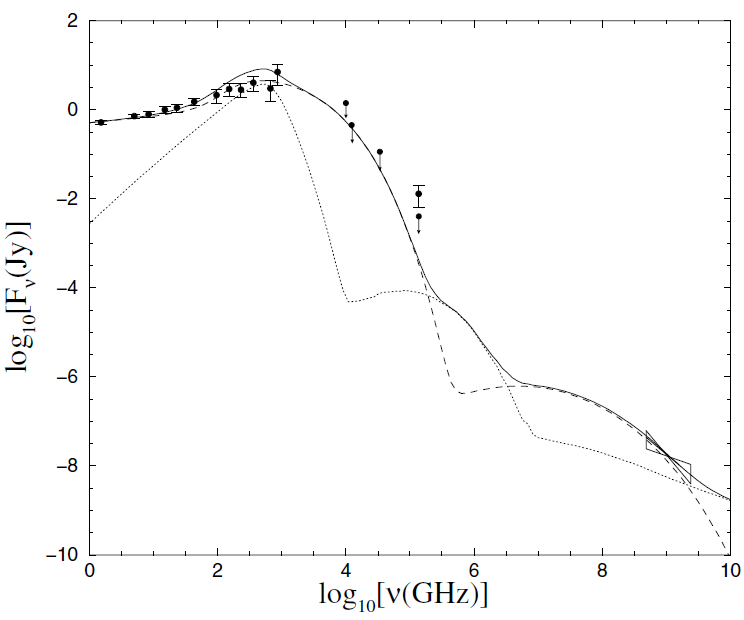
تاريخ الفيزياء

علماء الفيزياء


الفيزياء الكلاسيكية

الميكانيك

الديناميكا الحرارية


الكهربائية والمغناطيسية

الكهربائية

المغناطيسية

الكهرومغناطيسية


علم البصريات

تاريخ علم البصريات

الضوء

مواضيع عامة في علم البصريات

الصوت


الفيزياء الحديثة


النظرية النسبية

النظرية النسبية الخاصة

النظرية النسبية العامة

مواضيع عامة في النظرية النسبية

ميكانيكا الكم

الفيزياء الذرية

الفيزياء الجزيئية


الفيزياء النووية

مواضيع عامة في الفيزياء النووية

النشاط الاشعاعي


فيزياء الحالة الصلبة

الموصلات

أشباه الموصلات

العوازل

مواضيع عامة في الفيزياء الصلبة

فيزياء الجوامد


الليزر

أنواع الليزر

بعض تطبيقات الليزر

مواضيع عامة في الليزر


علم الفلك

تاريخ وعلماء علم الفلك

الثقوب السوداء


المجموعة الشمسية

الشمس

كوكب عطارد

كوكب الزهرة

كوكب الأرض

كوكب المريخ

كوكب المشتري

كوكب زحل

كوكب أورانوس

كوكب نبتون

كوكب بلوتو

القمر

كواكب ومواضيع اخرى

مواضيع عامة في علم الفلك

النجوم

البلازما

الألكترونيات

خواص المادة


الطاقة البديلة

الطاقة الشمسية

مواضيع عامة في الطاقة البديلة

المد والجزر

فيزياء الجسيمات


الفيزياء والعلوم الأخرى

الفيزياء الكيميائية

الفيزياء الرياضية

الفيزياء الحيوية

الفيزياء العامة


مواضيع عامة في الفيزياء

تجارب فيزيائية

مصطلحات وتعاريف فيزيائية

وحدات القياس الفيزيائية

طرائف الفيزياء

مواضيع اخرى
Numerical results
المؤلف:
Heino Falcke and Friedrich W Hehl
المصدر:
THE GALACTIC BLACK HOLE Lectures on General Relativity and Astrophysics
الجزء والصفحة:
p 330
10-2-2017
2341
Numerical results
Now we have verified that the basic properties of Sgr A* can be explained with a synchrotron +SSC jet model, we can consider a more sophisticated numerical approach. This has been outlined in Falcke and Markoff (2000), Markoff et al (2001), and Yuan et al (2002).
We start with the basic jet emission model (Falcke and Biermann 1999, Falcke and Markoff 2000), consisting of a conical jet with pressure gradient, nozzle and relativistic effects. The parameters in the nozzle for the quiescent state are determined from the underlying accretion disk, assumed to be an ADAF, as described in Yuan et al (2002). All quantities further out in the jet are solved by using conservation of mass and energy, and the Euler equation for the accelerating velocity field. The results are shown in figures 1.1 and show that the model is able to reproduce the observed spectrum and size in detail.

Figure 1.1. The jet-disk spectral model for Sgr A*. The dotted line is for the ADAF (optically thin, advection dominated accretion flow) contribution, the dashed line is for the jet emission, and the full line shows their sum. For the most part, the emission is dominated by the jet spectrum. The sub-mm bump is produced by the jet nozzle with a possible contribution from the accretion flow. The X-ray emission is largely SSC emission from the nozzle with a slight contribution from the more extended thermal X-ray emission from the accretion flow. We have here assumed an accretion rate of 10−6 Mּ yr−1, where only 0.1% of the power goes into the jet. For a 10% efficiency the required accretion rate is about 10−8 Mּ yr−1 and the disk contribution would be negligible. The model is discussed in more detail in Yuan et al (2002).
 الاكثر قراءة في الثقوب السوداء
الاكثر قراءة في الثقوب السوداء
 اخر الاخبار
اخر الاخبار
اخبار العتبة العباسية المقدسة

الآخبار الصحية















 قسم الشؤون الفكرية يصدر كتاباً يوثق تاريخ السدانة في العتبة العباسية المقدسة
قسم الشؤون الفكرية يصدر كتاباً يوثق تاريخ السدانة في العتبة العباسية المقدسة "المهمة".. إصدار قصصي يوثّق القصص الفائزة في مسابقة فتوى الدفاع المقدسة للقصة القصيرة
"المهمة".. إصدار قصصي يوثّق القصص الفائزة في مسابقة فتوى الدفاع المقدسة للقصة القصيرة (نوافذ).. إصدار أدبي يوثق القصص الفائزة في مسابقة الإمام العسكري (عليه السلام)
(نوافذ).. إصدار أدبي يوثق القصص الفائزة في مسابقة الإمام العسكري (عليه السلام)


















